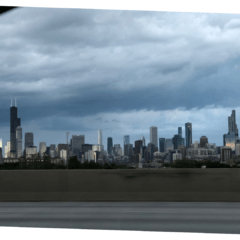[Noreen reflects on the nature and purpose of monuments, spurred by the below tongue-in-cheek take on history. — the Artblog editors]
Living in a city with a history as rich as Philadelphia’s, it is not uncommon to pass monuments and markers on a daily basis. Emerging from the Broad Street subway line, I find myself in the shadow of City Hall’s Second Empire architecture. When I stop at Blick for art supplies, I step foot in what was once the studio of Thomas Eakins. Though historical sites like these appear throughout the city, they are passive, almost invisible moments in the daily life of Philadelphians. Artist Lewis Colburn interprets both the past and present of monuments in his new exhibition at NAPOLEON gallery, On This Site.
Inspired by the past
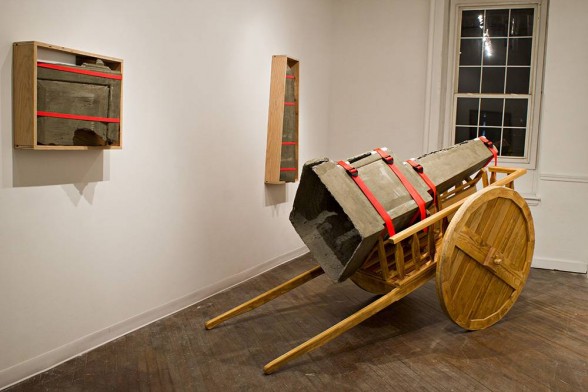
The exhibition, now installed in NAPOLEON’s narrow space, features a series of sculptures and photography. Two smaller objects hang on the wall to the viewer’s left; fragments of cement encased in a plywood crate, supported by Styrofoam pads. The third and largest rests ominously in the center of the space. The arrangement is tight–visitors must crowd and squeeze themselves between the enormous floor sculpture and the wall-mounted pieces. Nonetheless, the intentional monumentality of the centerpiece is amplified by the constricted space.
Colburn’s work overtly references the past, from the sculptures’ material to the period costume seen in the photographs. The largest sculpture in On This Site, a cement-cast obelisk laid on the bed of a wooden wagon, reflects Egyptian Revival architecture, favored in American architecture of the 18th and 19th centuries.
In conversation with Colburn, I learned that it was the statewide historical markers–the familiar blue and gold signposts that dot the city–which instigated the idea for On This Site. These markers, a project of the Pennsylvania Historical and Museum Commission, change the reality to which we find ourselves subject: a mundane walk to the grocery store becomes a visit to a historical site, and for a moment, this causes us to reimagine the scene in both the past and present.
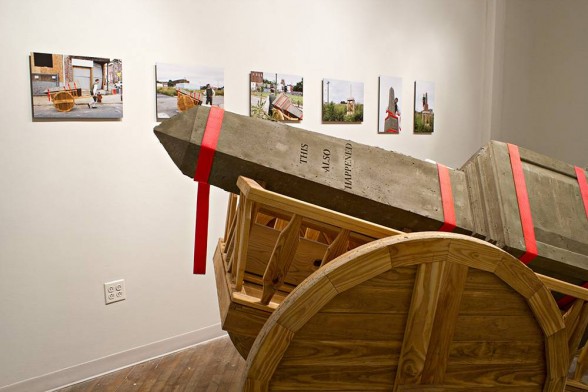
Firm ties to the present
The sense of the historical, however, does not linger. Jarring anachronisms–neon orange packaging belts, plywood, and Styrofoam–yank the visitor from a historical context and into the contemporary. Furthermore, two sides of the obelisk are inscribed with undoubtedly contemporary phrases: “THIS ALSO HAPPENED” and “THIS HAS NOT HAPPENED”. This mimicry of commemorative epigraphs, in a vague, uncouth modern dialect, almost teases a monument’s attempt at preserving a specific part of history. Instead, the epigraph is a humourous, over-generalized affirmation that “this happened.”
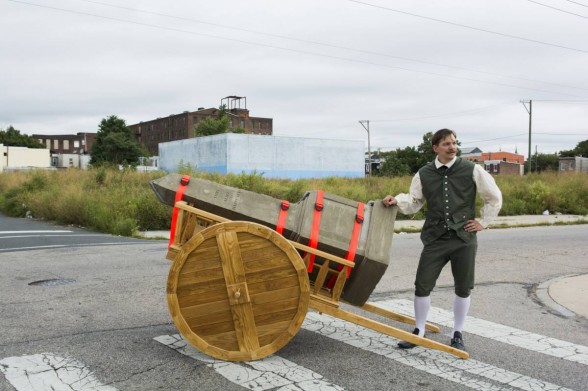
Even more offbeat are the series of photographs of what Colburn calls ‘The Event”. Clothed in 18th-century garb, the artist mounted the enormous obelisk on a wagon and wheeled it through Philadelphia’s streets to be installed in an overgrown lot in Kensington. The performance and mobility of the object usher out any sense of permanence, transforming what a monument aims for: to ensure the permanence of history.
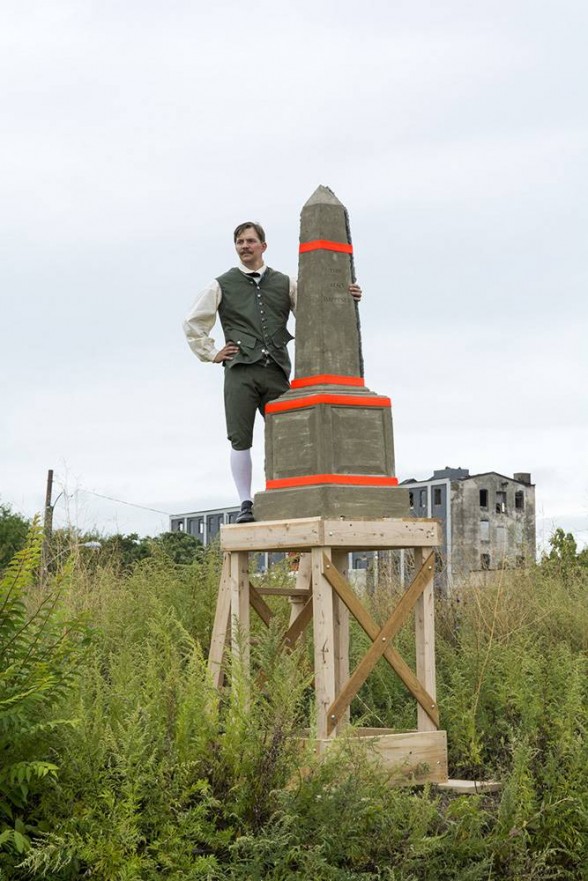
This challenge to the notion of a monument is inevitable–cities evolve, and with this evolution, history evolves, too. This begs us to define or redefine the relationship between cities and their monuments: are monuments subject to urban change, or must the city change around its monuments? In the age of ephemeral and digital information, can a mobile monument reference the site and history to which it has been dedicated–even when it does not physically reside there? The work, blurring the borders of sculpture, performance, and conceptual art, does not seek to answer these questions. Instead, On This Site suggests that a monument is an object where the past and present coincide in public life.
On This Site was on view at NAPOLEON gallery through Nov. 25th, 2014.



